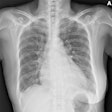Dear Digital X-Ray Insider,
Digital radiography (DR) is usually used after orthopedic surgery of the hand and wrist to confirm the correct placement of hardware. But would digital tomosynthesis (DTS) be a better option?
Researchers from Switzerland decided to assess whether tomosynthesis performed better than conventional DR for postoperative imaging. They theorized that the ability of DTS to see around superimposing structures might make it better suited for this use.
How did tomosynthesis perform? Find out in this edition's Insider Exclusive, sent to you before the rest of our membership receives it.
In other news in digital x-ray, an artificial intelligence algorithm that makes it easier for radiologists to estimate a patient's bone age from radiographs was the subject of a paper published earlier this month in the American Journal of Roentgenology. Researchers from South Korea believe it could improve upon existing methods based on using a hard-copy atlas. Click here to learn how it works.
And in one of the more intriguing stories you're likely to read this month, a radiologic technologist from Illinois tells the story of how she traveled to Peru this summer to help a project that aims to preserve and document mummies from the Chachapoya culture in the Andes Mountains. Julie Ostrowski used an analog x-ray machine to image mummies and then took photographs to get them into a digital format that could be shared with researchers around the world. Learn more by clicking here.
Get these stories and more in your Digital X-Ray Community, at xray.auntminnie.com.



















